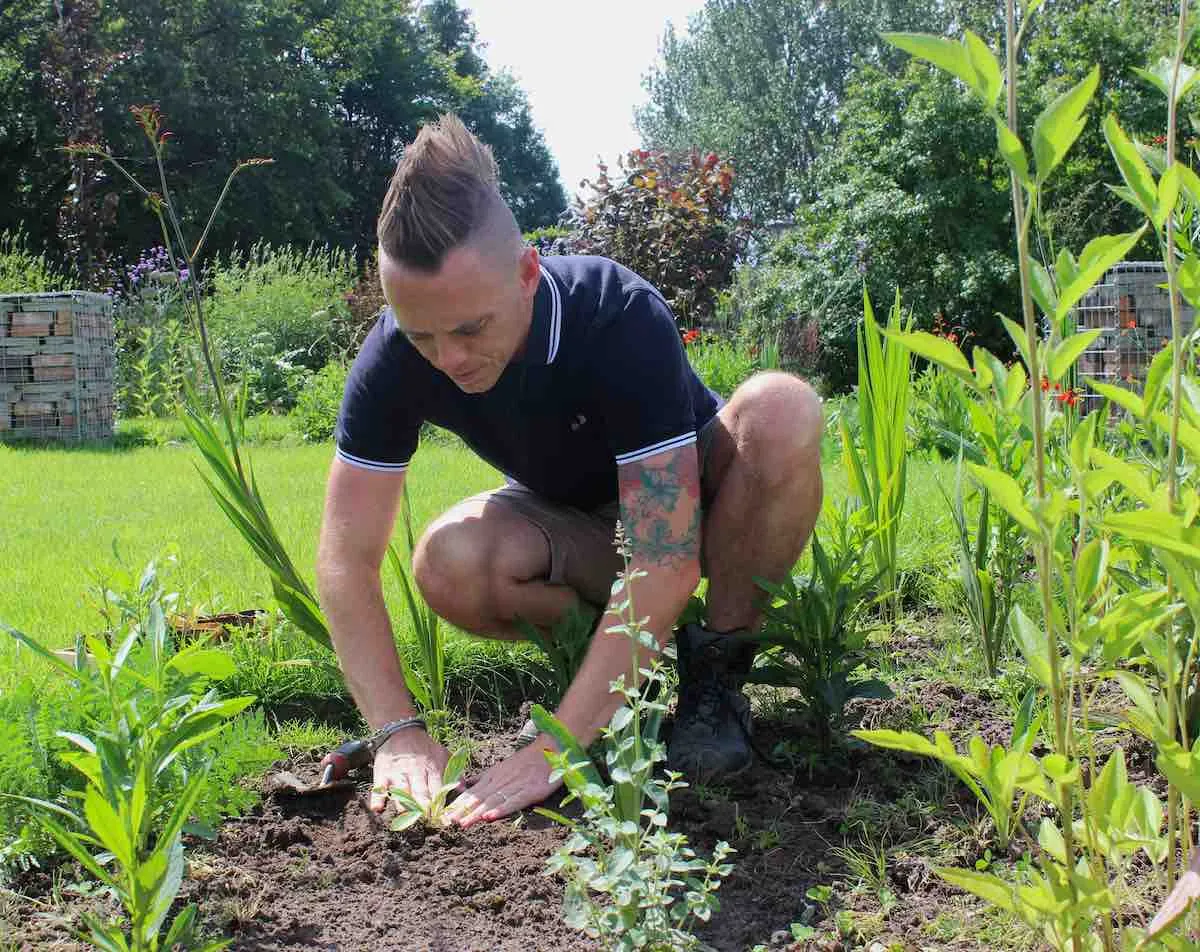Hi @dreggrim
Thanks for your question about the brownish parts on your oak sapling's leaves. From your description of browning on the "sleeves" (I assume you mean leaves), and the fact that anti-fungal treatments haven't helped, this sounds very much like leaf miner damage rather than a fungal issue. Leaf miners are actually quite common on young oak trees, and the good news is that whilst they look alarming, they're rarely fatal to the tree.
Understanding Leaf Miner Damage
Leaf miners are tiny insects whose larvae tunnel between the upper and lower surfaces of leaves, creating distinctive brown or whitish trails and blotches. These trails often look like squiggly lines or irregular brown patches, and because the larvae are feeding inside the leaf tissue itself, they're protected from most surface treatments like fungicide sprays. This explains why your anti-fungal treatments haven't been effective.
On oak trees, leaf miners typically create brown, papery areas that can make the leaves look quite sickly. The damage often appears as irregular brown patches or serpentine trails across the leaf surface. Young oak saplings are particularly susceptible because their tender leaves are easier for the female insects to lay eggs in, and the stress of being recently planted can make them more vulnerable to pest attacks.
Why Fungicide Hasn't Worked
The reason your anti-fungal spray hasn't helped is that leaf miners are insect pests, not fungal diseases. The brownish discolouration you're seeing is actually the result of the tiny larvae feeding on the tissue inside the leaf, creating dead areas that turn brown. Because the insects are literally inside the leaf structure, surface sprays simply can't reach them effectively.
This is a common mistake when diagnosing plant problems, as the symptoms can look very similar to various leaf diseases. However, if you look closely at the affected areas, you might be able to see the characteristic tunnel patterns or serpentine trails that leaf miners create as they move through the leaf tissue.
Treatment and Management Strategies
For leaf miners on your oak sapling, the best approach is usually to focus on supporting the overall health of the tree rather than trying to eliminate every single pest. Young oak trees are remarkably resilient, and whilst leaf miner damage looks unsightly, it rarely causes long-term harm to healthy trees.
Continue removing the worst-affected leaves as you've been doing, but don't worry about getting every single damaged leaf. The tree will produce new, healthy foliage, and leaf miners are typically more of a cosmetic issue than a serious health threat. Make sure your sapling is well-watered during dry spells and consider applying a balanced, slow-release fertiliser to help it cope with the stress of both the pest damage and establishing itself.
Basically, they won't kill your tree!
Prevention and Long-Term Care
Good garden hygiene is key to preventing future leaf miner problems. Clear up any fallen leaves around the base of your oak sapling, as many leaf miners overwinter in leaf litter and will emerge to reinfest the tree next year. Encouraging beneficial insects like birds, spiders, and parasitic wasps by creating a wildlife-friendly garden will also help keep leaf miner populations in check naturally.
As your oak sapling matures and becomes more established, it will become much more resistant to leaf miner damage. Older, more vigorous trees can usually shrug off these pests without any noticeable impact on their health or appearance.
Similar Plant Problem Discussions
For more advice on diagnosing and treating plant problems, check out these related forum discussions:
The key thing to remember is that young trees often go through challenging periods as they establish, and what looks like serious damage often resolves itself as the tree matures. Keep supporting your oak sapling with good basic care, and it should grow out of this leaf miner problem within a season or two.
Happy gardening!
Lee Garden Ninja
Hi @dreggrim
Thanks for your question about the brownish parts on your oak sapling's leaves. From your description of browning on the "sleeves" (I assume you mean leaves), and the fact that anti-fungal treatments haven't helped, this sounds very much like leaf miner damage rather than a fungal issue. Leaf miners are actually quite common on young oak trees, and the good news is that whilst they look alarming, they're rarely fatal to the tree.
Understanding Leaf Miner Damage
Leaf miners are tiny insects whose larvae tunnel between the upper and lower surfaces of leaves, creating distinctive brown or whitish trails and blotches. These trails often look like squiggly lines or irregular brown patches, and because the larvae are feeding inside the leaf tissue itself, they're protected from most surface treatments like fungicide sprays. This explains why your anti-fungal treatments haven't been effective.
On oak trees, leaf miners typically create brown, papery areas that can make the leaves look quite sickly. The damage often appears as irregular brown patches or serpentine trails across the leaf surface. Young oak saplings are particularly susceptible because their tender leaves are easier for the female insects to lay eggs in, and the stress of being recently planted can make them more vulnerable to pest attacks.
Why Fungicide Hasn't Worked
The reason your anti-fungal spray hasn't helped is that leaf miners are insect pests, not fungal diseases. The brownish discolouration you're seeing is actually the result of the tiny larvae feeding on the tissue inside the leaf, creating dead areas that turn brown. Because the insects are literally inside the leaf structure, surface sprays simply can't reach them effectively.
This is a common mistake when diagnosing plant problems, as the symptoms can look very similar to various leaf diseases. However, if you look closely at the affected areas, you might be able to see the characteristic tunnel patterns or serpentine trails that leaf miners create as they move through the leaf tissue.
Treatment and Management Strategies
For leaf miners on your oak sapling, the best approach is usually to focus on supporting the overall health of the tree rather than trying to eliminate every single pest. Young oak trees are remarkably resilient, and whilst leaf miner damage looks unsightly, it rarely causes long-term harm to healthy trees.
Continue removing the worst-affected leaves as you've been doing, but don't worry about getting every single damaged leaf. The tree will produce new, healthy foliage, and leaf miners are typically more of a cosmetic issue than a serious health threat. Make sure your sapling is well-watered during dry spells and consider applying a balanced, slow-release fertiliser to help it cope with the stress of both the pest damage and establishing itself.
Basically, they won't kill your tree!
Prevention and Long-Term Care
Good garden hygiene is key to preventing future leaf miner problems. Clear up any fallen leaves around the base of your oak sapling, as many leaf miners overwinter in leaf litter and will emerge to reinfest the tree next year. Encouraging beneficial insects like birds, spiders, and parasitic wasps by creating a wildlife-friendly garden will also help keep leaf miner populations in check naturally.
As your oak sapling matures and becomes more established, it will become much more resistant to leaf miner damage. Older, more vigorous trees can usually shrug off these pests without any noticeable impact on their health or appearance.
Similar Plant Problem Discussions
For more advice on diagnosing and treating plant problems, check out these related forum discussions:
The key thing to remember is that young trees often go through challenging periods as they establish, and what looks like serious damage often resolves itself as the tree matures. Keep supporting your oak sapling with good basic care, and it should grow out of this leaf miner problem within a season or two.
Happy gardening!
Lee Garden Ninja
 Lee Burkhill: Award Winning Designer & BBC 1's Garden Rescue Presenters Official Blog
Lee Burkhill: Award Winning Designer & BBC 1's Garden Rescue Presenters Official Blog



